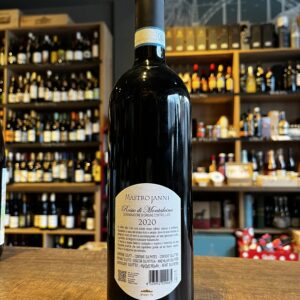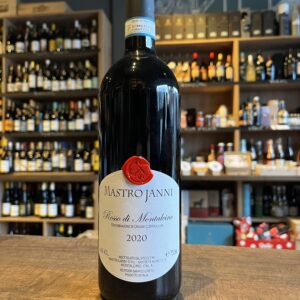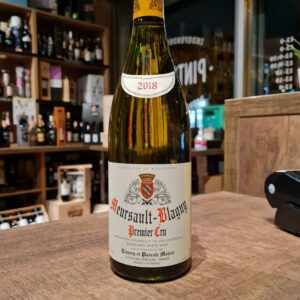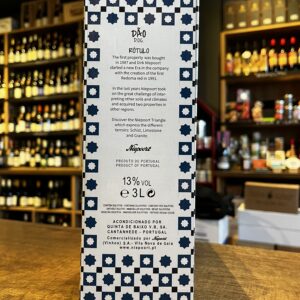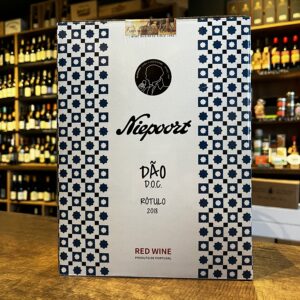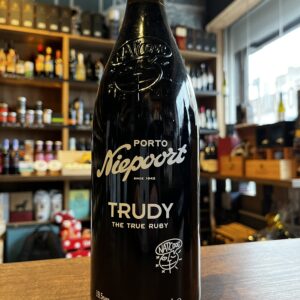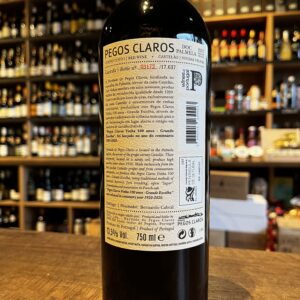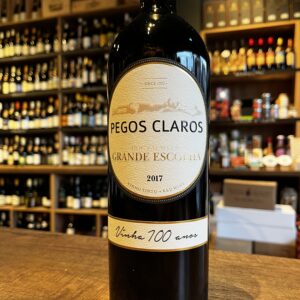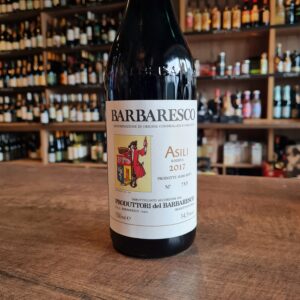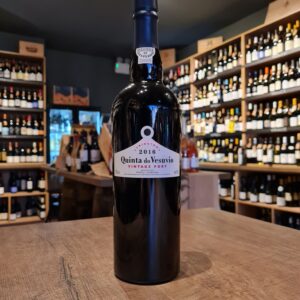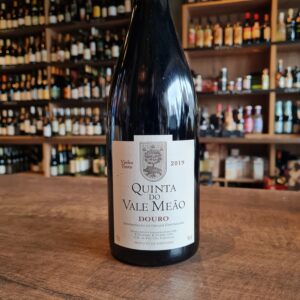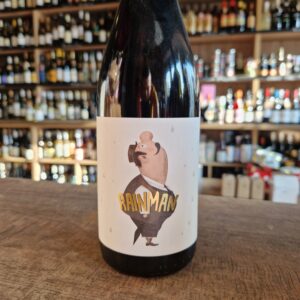-
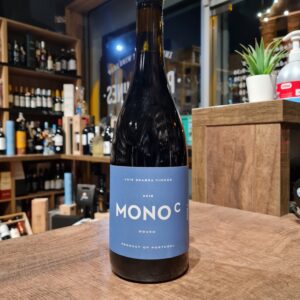 Luis Seabra is a producer that is at the forefront of the “new Douro” movement. Rather than making table wines that are, for all intents and purposes, “Little Ports,” Luis has taken a more balanced, restrained approach to winemaking in the oldest demarcated wine region in the world. His guiding principles are showcasing terroir and nuance above power and extraction. Bright, mineral driven and elegant, Luis’ wines are typically exposés of soil type. With the Mono C, he is taking a look at a particular variety – in this case, Castelão. While Castelão is a grape that is typically found further south in Portugal, Luis has found a mono-planted plot of the light-skinned grape in the Douro and is working his magic to craft a wine of unparalleled delicacy and elegance. Would pair it with charcuterie, grilled pork dishes, roasted poultry
Luis Seabra is a producer that is at the forefront of the “new Douro” movement. Rather than making table wines that are, for all intents and purposes, “Little Ports,” Luis has taken a more balanced, restrained approach to winemaking in the oldest demarcated wine region in the world. His guiding principles are showcasing terroir and nuance above power and extraction. Bright, mineral driven and elegant, Luis’ wines are typically exposés of soil type. With the Mono C, he is taking a look at a particular variety – in this case, Castelão. While Castelão is a grape that is typically found further south in Portugal, Luis has found a mono-planted plot of the light-skinned grape in the Douro and is working his magic to craft a wine of unparalleled delicacy and elegance. Would pair it with charcuterie, grilled pork dishes, roasted poultry -
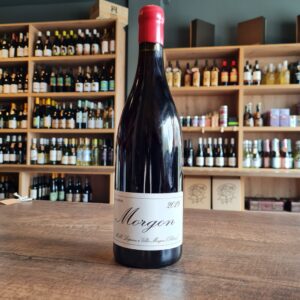 Domaine Marcel Lapierre Morgon is a natural red wine made by Domaine Marcel Lapierre with the Gamay variety in the AOC Morgon (Burgundy). Domaine Marcel Lapierre is one of the pioneer wineries that has been making natural wines since Marcel Lapierre, a true pacesetter among Beaujolais producers, took over the Villié-Morgon estate in 1973. With his work philosophy, he was committed to combining traditional best practices with new technologies so that his wines would be a true reflection of the landscape. In 1981, under the strong influence of natural wine master Jules Chavet, Marcel was among the first to produce wines of minimal intervention, without adding SO2 or any other substance. Domaine Marcel Lapierre Morgon 2018 is a fruity red wine with aromas of cherry, violet and liquorice, covered with a forest freshness and refreshing balsamic tones. On the palate it is structured, fresh and sweet. It begins with a sharp acidity that blends with the touches of fruit and liquorice and the intense minerality. This is a refreshing red, perfect for spring and summer; recommended to drink with charcuterie, paté, cheese, roast ham, roast lamb, roast chicken and turkey and with spicy Thai and Chinese dishes. Serve at the lower end of the suggested temperature range if you like your light red wines served cooler like the French
Domaine Marcel Lapierre Morgon is a natural red wine made by Domaine Marcel Lapierre with the Gamay variety in the AOC Morgon (Burgundy). Domaine Marcel Lapierre is one of the pioneer wineries that has been making natural wines since Marcel Lapierre, a true pacesetter among Beaujolais producers, took over the Villié-Morgon estate in 1973. With his work philosophy, he was committed to combining traditional best practices with new technologies so that his wines would be a true reflection of the landscape. In 1981, under the strong influence of natural wine master Jules Chavet, Marcel was among the first to produce wines of minimal intervention, without adding SO2 or any other substance. Domaine Marcel Lapierre Morgon 2018 is a fruity red wine with aromas of cherry, violet and liquorice, covered with a forest freshness and refreshing balsamic tones. On the palate it is structured, fresh and sweet. It begins with a sharp acidity that blends with the touches of fruit and liquorice and the intense minerality. This is a refreshing red, perfect for spring and summer; recommended to drink with charcuterie, paté, cheese, roast ham, roast lamb, roast chicken and turkey and with spicy Thai and Chinese dishes. Serve at the lower end of the suggested temperature range if you like your light red wines served cooler like the French -
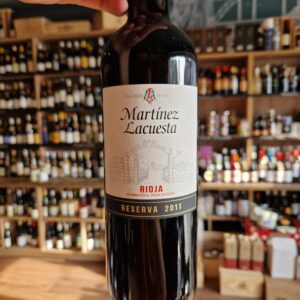 Bodegas Martínez Lacuesta was founded in 1895 in Haro by Félix Martínez Lacuesta. A winemaker, lawyer, politician and publicist, he was the first president of the National Association of Winegrowers and Wine Industries, as well as of the Rioja Wine Union. He was also one of the creators of the Regulating Board of D.O. Rioja, where he represented his fellow winemakers. The philosophy of this century-old winery is to produce the best wines from the best grapes. To do so, they have plots distributed throughout Rioja Alta, searching for the best vineyards and buying, up until this day, new plots to plant new vines. Martínez Lacuesta Reserva is a wine made from Tempranillo, Graciano and Mazuelo, from vineyards located at 450-600 metres of altitude. Their vines, of an average of 25 years old, are planted on clayey-calcareous soils. Suitable to accompany white or red meats, fishes with sauce, grilled meat or vegetables
Bodegas Martínez Lacuesta was founded in 1895 in Haro by Félix Martínez Lacuesta. A winemaker, lawyer, politician and publicist, he was the first president of the National Association of Winegrowers and Wine Industries, as well as of the Rioja Wine Union. He was also one of the creators of the Regulating Board of D.O. Rioja, where he represented his fellow winemakers. The philosophy of this century-old winery is to produce the best wines from the best grapes. To do so, they have plots distributed throughout Rioja Alta, searching for the best vineyards and buying, up until this day, new plots to plant new vines. Martínez Lacuesta Reserva is a wine made from Tempranillo, Graciano and Mazuelo, from vineyards located at 450-600 metres of altitude. Their vines, of an average of 25 years old, are planted on clayey-calcareous soils. Suitable to accompany white or red meats, fishes with sauce, grilled meat or vegetables -
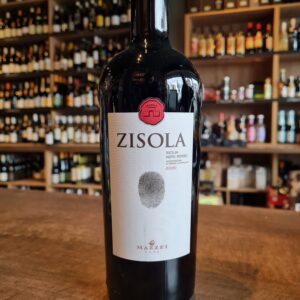 Mazzei is the name of one of the most famous and richest families in the history of Tuscan winemaking, the truth is that their desire to discover and experience other things led them to look for other areas where they could continue their winemaking adventure. So, in 2003, they became aware of the great potential hidden within the Val di Noto region in southeastern Sicily (Italy). A total of 21 hectares of vineyards where Tuscan passion meets Sicilian tradition. Zisola is made only from traditional "Alberello" (bushy) vines grown near Noto, an unique area to make wine. The proximity of the sea and the soil rich in limestone allow to best balance the natural Nero d'Avola exuberance, with a great freshness and elegance. Spicy fish soups, savoury pasta and rice dishes, grilled red meats and vegetables.
Mazzei is the name of one of the most famous and richest families in the history of Tuscan winemaking, the truth is that their desire to discover and experience other things led them to look for other areas where they could continue their winemaking adventure. So, in 2003, they became aware of the great potential hidden within the Val di Noto region in southeastern Sicily (Italy). A total of 21 hectares of vineyards where Tuscan passion meets Sicilian tradition. Zisola is made only from traditional "Alberello" (bushy) vines grown near Noto, an unique area to make wine. The proximity of the sea and the soil rich in limestone allow to best balance the natural Nero d'Avola exuberance, with a great freshness and elegance. Spicy fish soups, savoury pasta and rice dishes, grilled red meats and vegetables. -
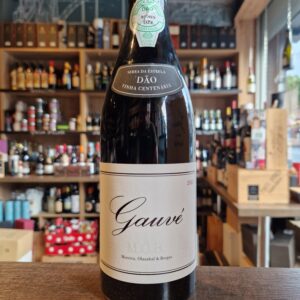 This project was born from the will of three winemakers, Jorge Moreira, Francisco Olazabal and Jorge Serôdio Borges, to make a wine together. The chosen region was the Dão, a region for which there is a common admiration that was born in the tasting of older wines, from the 60s and 70s that surprise for their elegance and freshness. The identity and complexity of these wines is indeed remarkable and serves as an inspiration for MOB wines.
This project was born from the will of three winemakers, Jorge Moreira, Francisco Olazabal and Jorge Serôdio Borges, to make a wine together. The chosen region was the Dão, a region for which there is a common admiration that was born in the tasting of older wines, from the 60s and 70s that surprise for their elegance and freshness. The identity and complexity of these wines is indeed remarkable and serves as an inspiration for MOB wines. -
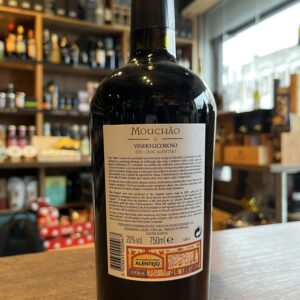
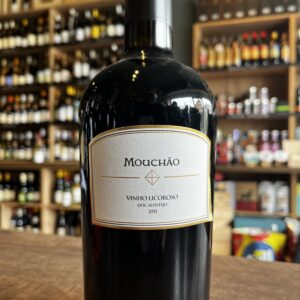 This fortified wine has been produced in Mouchão since the winery was built in 1901. The best grapes from Alicante Bouschet were harvested by hand and trodden by foot in traditional stone presses. The grapes are gently macerated until the fermentation process begins in order to develop a round, subtle and soft mouthfeel. After 120 years, this fortified dessert wine continues to be essential in the homes of Alentejo families at Christmas time. Sold and consumed young, mainly at the beginning of December of the same year of production. Nowadays its popularity is growing outside the festive season and is served in restaurants, very cold after meals. A very traditional and forming part of the tradition of the Northeast Alentejo.
This fortified wine has been produced in Mouchão since the winery was built in 1901. The best grapes from Alicante Bouschet were harvested by hand and trodden by foot in traditional stone presses. The grapes are gently macerated until the fermentation process begins in order to develop a round, subtle and soft mouthfeel. After 120 years, this fortified dessert wine continues to be essential in the homes of Alentejo families at Christmas time. Sold and consumed young, mainly at the beginning of December of the same year of production. Nowadays its popularity is growing outside the festive season and is served in restaurants, very cold after meals. A very traditional and forming part of the tradition of the Northeast Alentejo. -
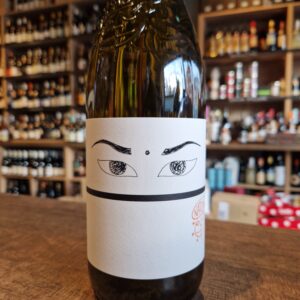 Nat Cool is naturally “cool and funky”. It represents an innovative concept initiated by Niepoort, in which various producers came together to create light, easy-to-drink wines. In the Vinho Verde region, we produced a wine typical of the region – a wine which references the “cloudy” wines of the past which were bottled with some residual sugar and fine lees, and therefore re-fermented in the bottle. Welcome to the Nat Cool world! This white wine was produced using a minimal intervention winemaking approach and is naturally turbid as it fermented in the bottle. It is intentionally not clarified and its aromas are reminiscent of the wines that used to be produced in the Vinho Verde region long ago. This is an intentionally uncomplicated wine: lightly shake the bottle before opening and enjoy with traditional Portuguese snacks!
Nat Cool is naturally “cool and funky”. It represents an innovative concept initiated by Niepoort, in which various producers came together to create light, easy-to-drink wines. In the Vinho Verde region, we produced a wine typical of the region – a wine which references the “cloudy” wines of the past which were bottled with some residual sugar and fine lees, and therefore re-fermented in the bottle. Welcome to the Nat Cool world! This white wine was produced using a minimal intervention winemaking approach and is naturally turbid as it fermented in the bottle. It is intentionally not clarified and its aromas are reminiscent of the wines that used to be produced in the Vinho Verde region long ago. This is an intentionally uncomplicated wine: lightly shake the bottle before opening and enjoy with traditional Portuguese snacks! -
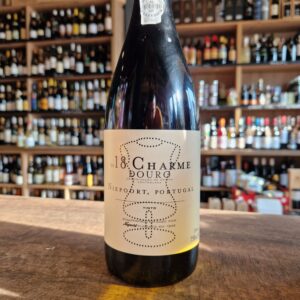 Another excellent wine from Niepoort. Charme is all about elegance and balance, achieved by taking special attention to the smallest details during the entire wine-making process. Made in traditional stone lagares with 100% grape stems, Charme’s elegance is achieved using grapes from very old vineyards in Vale de Mendiz, on the banks of the Pinhão river. Pair it with mushrooms and game dishes, such as partridge or pheasant
Another excellent wine from Niepoort. Charme is all about elegance and balance, achieved by taking special attention to the smallest details during the entire wine-making process. Made in traditional stone lagares with 100% grape stems, Charme’s elegance is achieved using grapes from very old vineyards in Vale de Mendiz, on the banks of the Pinhão river. Pair it with mushrooms and game dishes, such as partridge or pheasant -
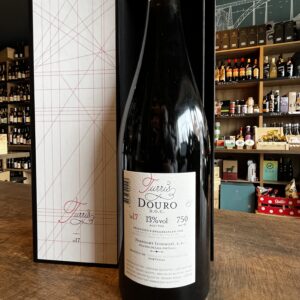
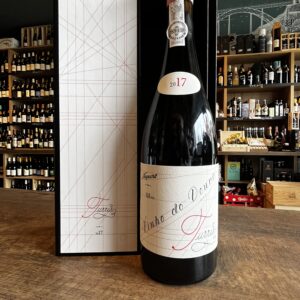 Turris is Niepoort's flagship red wine from the Cima Corgo region, more specifically from a very old South-facing vineyard whose vines are more than 130 years old , it is one of the oldest vineyards we know of in the region. This truly ancient, uncultivated vineyard lies hidden in the heart of the Douro Valley and is a true gift from our ancestors and refelcts every detail of nature and its area. These grapes from the Torre were always intended for one of Niepoort top wine Batuta and were a dream come true from Dirk Niepoort. The Turris was bottled quite early to preserve its freshness, minerality, youthful nature and the purity of its aromas and we expect it to show great aging potential. In addition to being a unique wine, each bottle is also unique because the labels were individually designed by the artist João Noutel.
Turris is Niepoort's flagship red wine from the Cima Corgo region, more specifically from a very old South-facing vineyard whose vines are more than 130 years old , it is one of the oldest vineyards we know of in the region. This truly ancient, uncultivated vineyard lies hidden in the heart of the Douro Valley and is a true gift from our ancestors and refelcts every detail of nature and its area. These grapes from the Torre were always intended for one of Niepoort top wine Batuta and were a dream come true from Dirk Niepoort. The Turris was bottled quite early to preserve its freshness, minerality, youthful nature and the purity of its aromas and we expect it to show great aging potential. In addition to being a unique wine, each bottle is also unique because the labels were individually designed by the artist João Noutel. -
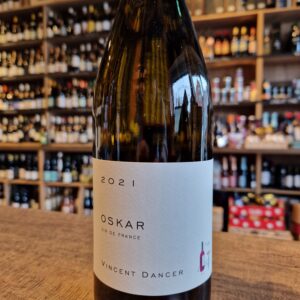
This is a unique wine from a once off production from Vincent Dancer. Oskar is the result of Vincent Dancer frustration with the low yeald of his top four Vineyards due frost that happen right after the fruit started to grow resulting in huge losses. Oskar is the name of Théo Dancer’s Australian Shepard.
So, this incredibly rare, one-off bottling comprises of a roughly equal amount of Chassagne-Montrachet 1er Cru La Romanée, Chassagne-Montrachet 1er Cru Tête du Clos, Meursault 1er Cru Perrières and Grand Cru Chevalier-Montrachet. Naturally, by blending across villages, Dancer has had to declassify this wine and chose Vin de France instead of the risker option of Bourgogne Blanc! Of course, this will have little bearing on a wine that is set to become a unicorn.
This true rarity from the Dancer estate is a pure sensory pleasure of great rarity, as only two barrels were produced. Pinto Wines has the enormous honour to stock Vincent Dancer in general nevermind this unique wine.
If you'd ask me I wouldn't drink this wine with food or any other beverage. Simply on it's own and and my best friend and wife. But if you really have to pair it then I would suggest stinky cheeses, seafood and why not the coq au vin
-
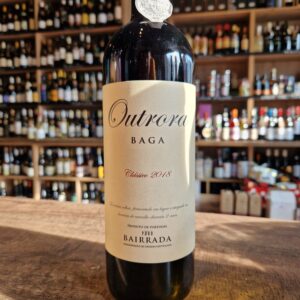 This Bairrada Classic wine is a tribute to the centenary vineyards, matriarchs of the region and witnesses of past times. The grapes are selected from 80 to 120 year old vines from our vineyard in the Cadoiços Valley. Winemaking in “lagar” with foot treading, besides being an old technique, we believe it remains the best way to obtain great wines of this variety. The two-year oak stage and subsequent bottle rest give the elegance and balance needed for a wine to be tasted for many years. An Impressive Bairrada!An Impressive Wine! Goes well with buttered Goat and Sheep Cheeses, traditional sausages (raw, boiled, or roasted), red meats
This Bairrada Classic wine is a tribute to the centenary vineyards, matriarchs of the region and witnesses of past times. The grapes are selected from 80 to 120 year old vines from our vineyard in the Cadoiços Valley. Winemaking in “lagar” with foot treading, besides being an old technique, we believe it remains the best way to obtain great wines of this variety. The two-year oak stage and subsequent bottle rest give the elegance and balance needed for a wine to be tasted for many years. An Impressive Bairrada!An Impressive Wine! Goes well with buttered Goat and Sheep Cheeses, traditional sausages (raw, boiled, or roasted), red meats -

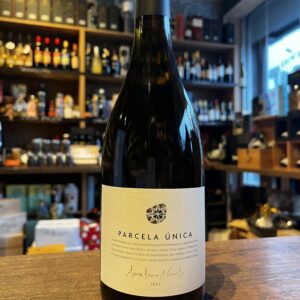 Born in Monção in Portugal’s Vinho Verde region, Anselmo Mendes fell in love with the Alvarinho grape at an early age and began making his first wines from the variety in 1988. Over the years he has consulted for many of Portugal’s top wineries and he also makes his own wines in Minho close to the border with Spain. Anselmo uses his decades of experience of working with Alvarinho to create a range of styles from crisp, light-bodied expressions to richer wines which are fermented and aged in oak barrels. A very versatile wine, it can be paired with stronger meat dishes or more complex fish, as well as shellfish and crustaceans. In the company of almond crusted cod on a bed of mashed potatoes or lamb chops with rosemary, Parcela Única wine in perfect harmony enhances fantastic flavors. Should be served between 11-13ºC. Technical sheet
Born in Monção in Portugal’s Vinho Verde region, Anselmo Mendes fell in love with the Alvarinho grape at an early age and began making his first wines from the variety in 1988. Over the years he has consulted for many of Portugal’s top wineries and he also makes his own wines in Minho close to the border with Spain. Anselmo uses his decades of experience of working with Alvarinho to create a range of styles from crisp, light-bodied expressions to richer wines which are fermented and aged in oak barrels. A very versatile wine, it can be paired with stronger meat dishes or more complex fish, as well as shellfish and crustaceans. In the company of almond crusted cod on a bed of mashed potatoes or lamb chops with rosemary, Parcela Única wine in perfect harmony enhances fantastic flavors. Should be served between 11-13ºC. Technical sheet -
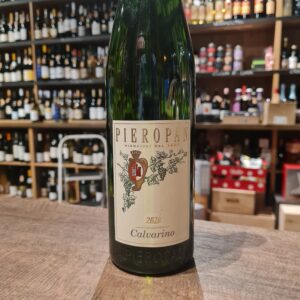 The history of this brand dates back to 1880, when this business was established in the Soave village in the reputed zone of Palazzo Pullici in Italy. Leonildo Pieropan, a physician from Soave, was well-aware of the potential of the soils in this region, because of his previous work experience in the family vineyards. He, along with his sons, Fausto and Gustavo, started working in the cellars in the 1950s and 60s to churn out impeccable quality, Italian wines that spoke a lot about the quality of their terroirs. Today, this business is run by the fifth generation of the Pieropan family, with the same dedication and winemaking philosophy. The Pieropan family believes in traditional winemaking principles. These are reflected in the way they maintain their vineyards. The local territory of these vineyards is given utmost importance and minimalistic intervention technique is followed in addition to organic viticultural practices. The three vineyards from where grapes are sourced for Pieropan wines are Calvarino, La Rocca and Garzon. Calvarino vineyard is the oldest of the three as it has been with the family since 1901. It is located right in the heart of the Soave area and is blessed with amazingly rich and fertile volcanic soils. It makes an excellent aperitif and partners a wide range of dishes, especially vegetable quiches, delicately-flavoured fish, shellfish and cheese soufflés
The history of this brand dates back to 1880, when this business was established in the Soave village in the reputed zone of Palazzo Pullici in Italy. Leonildo Pieropan, a physician from Soave, was well-aware of the potential of the soils in this region, because of his previous work experience in the family vineyards. He, along with his sons, Fausto and Gustavo, started working in the cellars in the 1950s and 60s to churn out impeccable quality, Italian wines that spoke a lot about the quality of their terroirs. Today, this business is run by the fifth generation of the Pieropan family, with the same dedication and winemaking philosophy. The Pieropan family believes in traditional winemaking principles. These are reflected in the way they maintain their vineyards. The local territory of these vineyards is given utmost importance and minimalistic intervention technique is followed in addition to organic viticultural practices. The three vineyards from where grapes are sourced for Pieropan wines are Calvarino, La Rocca and Garzon. Calvarino vineyard is the oldest of the three as it has been with the family since 1901. It is located right in the heart of the Soave area and is blessed with amazingly rich and fertile volcanic soils. It makes an excellent aperitif and partners a wide range of dishes, especially vegetable quiches, delicately-flavoured fish, shellfish and cheese soufflés -
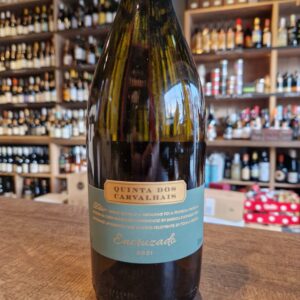 Sogrape Vinhos was founded in 1942 by Fernando van Zeller Guedes, with the ambition of making Portuguese wines known to the world and a long-term vision based on the quality of the wines to be marketed, the importance of the novelty of the brands, and the presentation of its wines. Today, led by the third generation of the founding family, Sogrape Vinhos is increasingly faithful to the goal it has had since it was founded: to be a family-owned company with an international vocation, focused on the production of quality wines, on innovation, and the development of global Portuguese brands. Sogrape Vinhos has about 830 hectares of vineyards in Portugal. Quinta dos Carvalhais is located in the municipality of Mangualde, near Nelas and Alcafache. The soil, the climate, the experience of those who have always produced wine make the Dão truly special. This 105-hectare estate, situated at an altitude of 465-500 metres, has 50 hectares under vine on predominantly granite soils. Warm days and cool nights at this altitude slow down the grape ripening process and result in wines with lovely depth yet vibrant fruit and a signature freshness. Precision viticulture is carried out on the estate with a multitude of different plots matched to specific grape varieties and harvested at different times. The fruit for the 2021 Encruzado was sourced from four different plots. Two cooler plots, one next to the lake on the estate and another often shaded by the oak trees, deliver a vibrant acidity the blend. Another plot with more sandy soils produces intensely aromatic grapes. All of the vineyards are farmed sustainably and harvesting is carried out by hand.
Sogrape Vinhos was founded in 1942 by Fernando van Zeller Guedes, with the ambition of making Portuguese wines known to the world and a long-term vision based on the quality of the wines to be marketed, the importance of the novelty of the brands, and the presentation of its wines. Today, led by the third generation of the founding family, Sogrape Vinhos is increasingly faithful to the goal it has had since it was founded: to be a family-owned company with an international vocation, focused on the production of quality wines, on innovation, and the development of global Portuguese brands. Sogrape Vinhos has about 830 hectares of vineyards in Portugal. Quinta dos Carvalhais is located in the municipality of Mangualde, near Nelas and Alcafache. The soil, the climate, the experience of those who have always produced wine make the Dão truly special. This 105-hectare estate, situated at an altitude of 465-500 metres, has 50 hectares under vine on predominantly granite soils. Warm days and cool nights at this altitude slow down the grape ripening process and result in wines with lovely depth yet vibrant fruit and a signature freshness. Precision viticulture is carried out on the estate with a multitude of different plots matched to specific grape varieties and harvested at different times. The fruit for the 2021 Encruzado was sourced from four different plots. Two cooler plots, one next to the lake on the estate and another often shaded by the oak trees, deliver a vibrant acidity the blend. Another plot with more sandy soils produces intensely aromatic grapes. All of the vineyards are farmed sustainably and harvesting is carried out by hand. -
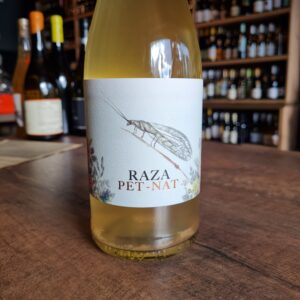 The concept of this label is to send the consumer to the botanical universe of the XVI century. A very unique style which is a tribute to nature and the living beings who look after it so well. A mixture of charcoal pencils with watercolor provides fresh, traditional, and natural air. The informative label on the side of the bottle is drawn in a vintage style referencing this era's aesthetics. The Lacewing or Chrysoperla (Raza)represents their holistic approach to viticulture. Its efficiency in biological control pest is remarkable and helps keep the vines free of pests.Pet Nat is an abbreviation for Pétillant Naturel, a naturally sparkling wine. The fermented wine is still bottled in the bottle, which stops the fermentation there, so a little CO2 and yeast precipitate is formed in the bottle. The wine is not cleaned, sweetened (no dosage) and the wine is now closed with a regular crown cap. The wine is made with natural yeast and uses minimal sulphites. Spontaneous fermentation ends in the bottle, as a result of which a pleasantly natural layer remains in the wine. This refreshing, sparkling wine is full of fruity and lively orchard flavors. The natural sediment makes the wine cloudy, while adding many interesting nuances to the taste, the wild yeast makes the wine tasty and easy to enjoy.
The concept of this label is to send the consumer to the botanical universe of the XVI century. A very unique style which is a tribute to nature and the living beings who look after it so well. A mixture of charcoal pencils with watercolor provides fresh, traditional, and natural air. The informative label on the side of the bottle is drawn in a vintage style referencing this era's aesthetics. The Lacewing or Chrysoperla (Raza)represents their holistic approach to viticulture. Its efficiency in biological control pest is remarkable and helps keep the vines free of pests.Pet Nat is an abbreviation for Pétillant Naturel, a naturally sparkling wine. The fermented wine is still bottled in the bottle, which stops the fermentation there, so a little CO2 and yeast precipitate is formed in the bottle. The wine is not cleaned, sweetened (no dosage) and the wine is now closed with a regular crown cap. The wine is made with natural yeast and uses minimal sulphites. Spontaneous fermentation ends in the bottle, as a result of which a pleasantly natural layer remains in the wine. This refreshing, sparkling wine is full of fruity and lively orchard flavors. The natural sediment makes the wine cloudy, while adding many interesting nuances to the taste, the wild yeast makes the wine tasty and easy to enjoy.


